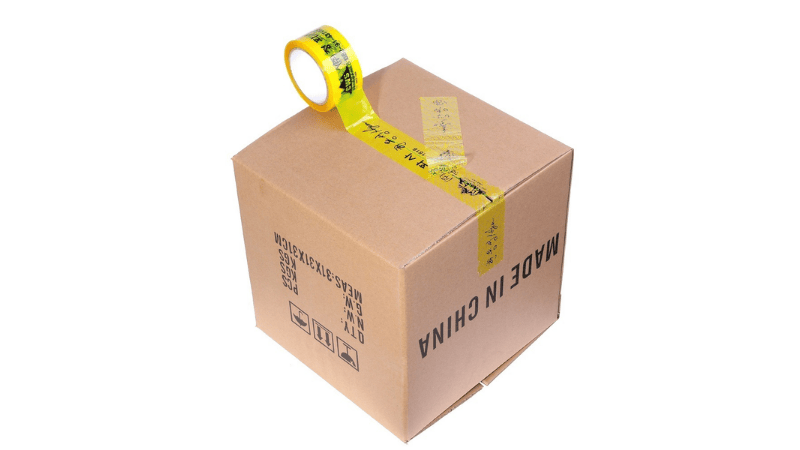Inventory shrinkage cost U.S. retailers an estimated $112.1 billion. However, companies using tamper-proof packaging and access control systems have seen up to a 45% reduction in shrinkage incidents. Security cameras, alarm systems, and staff training help, but combining these with physical packaging protection creates more coverage.
In this blog post, we will explore how security tape helps reduce inventory shrinkage in warehouses. We will look at common threats and explain how warehouse security systems work. Keep reading!
Understanding Warehouse Security Challenges
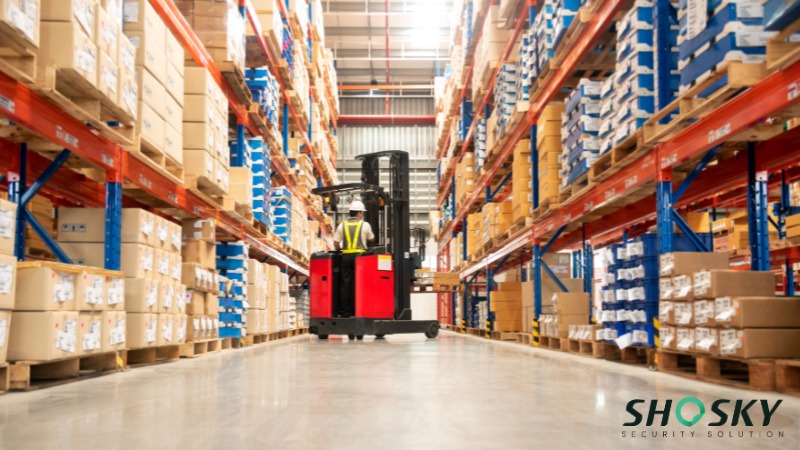
Warehouses handle large volumes of valuable goods every day. This makes them a frequent target for security risks like theft, tampering, and property damage. A missing product or a small breach can cause big losses if not addressed quickly. Businesses must secure their facilities properly to protect inventory, employees, and operations.
Warehouses face several security challenges, including:
- Unauthorized Access: Intruders can easily enter through poorly secured doors or windows.
- Employee Theft: Even trusted staff can sometimes take advantage of weak monitoring.
- Tampering and Damage: Poor packaging security leads to unnoticed product tampering.
- Burglary and Break-ins: Criminals often target storage areas, loading docks, and parking lots.
Surveillance cameras alone cannot protect all critical areas. Entry points, parking lots, storage rooms, and packaging zones require added protection. Tamper-evident solutions, security tape, custom labels, access control systems, and alarms create a strong security network. Combining these security measures improves warehouse security, controls access, and keeps both assets and personnel safe.
Types of Security Tape for Warehouse Use

Security tape is a specialized adhesive tape designed to secure inventory by sealing it in a way that prevents unnoticed tampering. Unlike regular tape, security tape reveals visible signs when disturbed, indicating potential theft, damage, or unauthorized access.
It helps businesses maintain control over inventory, improve security, and manage risks effectively. By using the right type of security tape, warehouses can ensure that inventory remains protected and any tampering is immediately visible.
Here’s a quick comparison of the key features of different types of security tapes:
| Type of Tape | Key Feature |
|---|---|
| Tamper-Evident Tape | Indicates tampering by revealing messages like 'VOID' or showing visible damage when disturbed. |
| Printed Security Tape | Custom printed with security messages or handling instructions to prevent tampering. |
| Barcode and RFID Security Tapes | Incorporates barcodes or RFID tags for real-time inventory tracking. |
| Color-Coded Security Tape | Uses color coding to differentiate inventory by category, priority, or security level. |
Each tape serves a different purpose. It’s important to choose the best one based on your requirements. Here are more details about each type so that you can make the right decision:
Tamper-Evident Tape
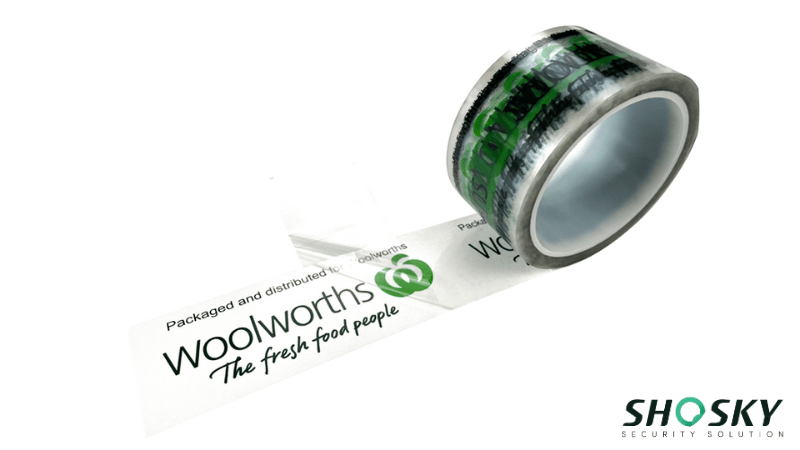
Tamper-evident tape is designed to show clear signs when someone tries to remove or disturb it. The tape will reveal a message such as “VOID” or show visible damage when tampered with.
This helps warehouse staff quickly identify any inventory that may have been accessed without permission. Tamper-evident tape is often used to secure packages, cartons, and pallets containing valuable or sensitive inventory.
Printed Security Tape
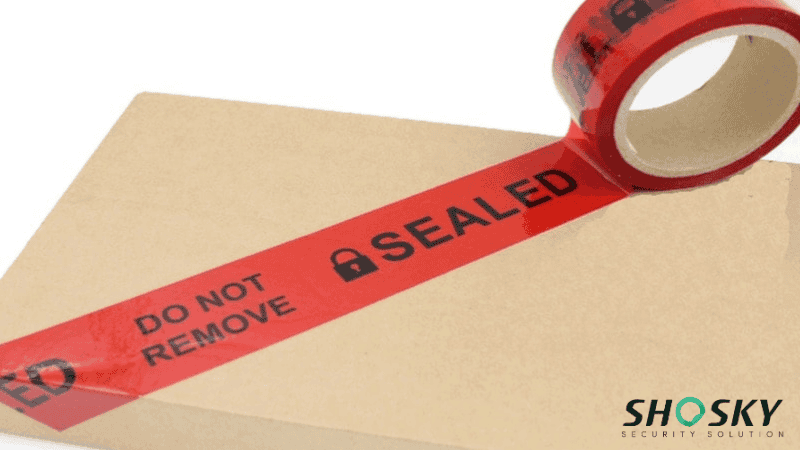
Printed security tape carries custom messages, security warnings, or handling instructions directly on the tape itself. It provides both a visual deterrent against tampering and additional security information.
The printed messages, such as “Do Not Open” or “Security Seal,” help prevent unauthorized tampering while also offering branding benefits. Printed tape is commonly used for securing high-value inventory or items that require special handling or inspection.
Barcode and RFID Security Tapes

Barcode and RFID security tapes combine physical protection with automated inventory tracking. These tapes include barcodes or embedded RFID tags that help warehouses track inventory movements in real-time.
For instance, many companies, including Amazon and others in logistics, integrate barcodes or RFID security tape into their packaging process. By scanning these tags, they can track the movement of each package from the warehouse to the customer’s doorstep.
If a package goes missing, the tracking data helps identify where the issue occurred, whether it’s theft, misplacement, or another error.
Color-Coded Security Tape

Color-coded security tape helps differentiate inventory by product category, priority level, or security level. For example, red tape might be used for high-security or restricted inventory, while green could identify outgoing goods.
This color-coding system helps warehouse staff quickly identify the contents and the importance of each package or pallet, reducing the risk of mistakes during handling or shipment.
How Security Tape Helps Prevent Inventory Shrinkage
Security tape’s adhesive properties and tamper-evident features work together to safeguard goods, prevent unauthorized access, and deter potential thieves. Security tape, particularly tamper-evident tape, ensures that once inventory is sealed, it remains protected unless an intrusion attempt occurs.
Visible Deterrent

One of the most effective ways security tapes prevent shrinkage is by acting as a visible deterrent. When employees or intruders see that a package is sealed with security tape, they are immediately aware that the item is being monitored.
The highly visible nature of security tape, especially when it has custom branding or specific warning messages, makes it clear that tampering is not tolerated. This simple visual cue significantly reduces the chances of unauthorized access.
Criminal activity, whether internal or external, is less likely to occur when it’s clear that the inventory is protected.
Tamper-Evident Features
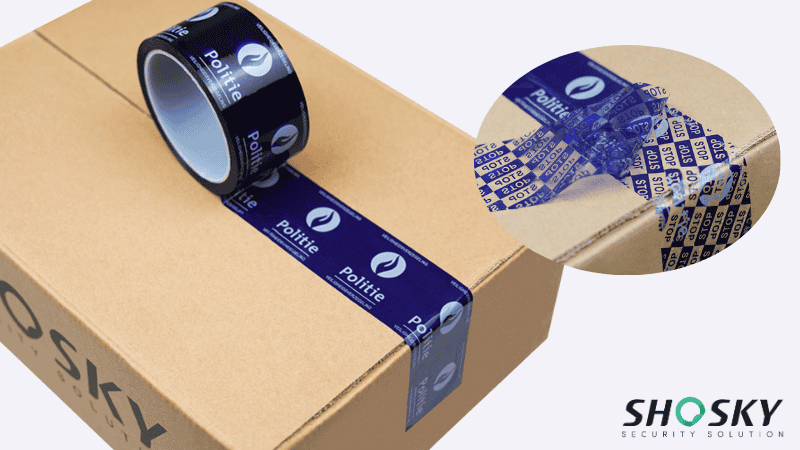
The key feature of tamper-evident tape is that it offers an added layer of security through its unique design. When someone tries to remove or alter the tape, it leaves a permanent mark — typically a “VOID” imprint or a broken pattern. This clear evidence of tampering immediately signals that the goods have been compromised.
Tamper-evident tape is designed to show the first signs of an intrusion, providing both warehouse managers and employees with a simple way to identify any tampering that might occur.
Reducing Theft

Security tape is a direct line of defense against theft. It indicates that only authorized personnel have access to the inventory. The sealed tape marks inventory as off-limits to anyone who doesn’t have the proper clearance.
Whether used on bags, pallets, and boxes, this physical barrier forces employees to be more cautious, knowing that tampering with inventory will be immediately detectable.
Monitoring and Tracking

Another important function of security tape is its role in inventory monitoring and tracking. Many warehouses use barcode or RFID-enabled security tape to improve both the security and efficiency of their operations. This integration allows warehouses to track inventory, ensuring that every item’s movement is logged and accounted for.
By embedding tracking technology within the security tape itself, businesses can easily identify when an item is moved or tampered with. It reduces the chances of theft and misplacement.
Furthermore, the ability to monitor inventory movements through tape data helps businesses streamline their operations and prevent shrinkage before it becomes a larger issue.
Benefits of Using Security Tape for Inventory Shrinkage Prevention
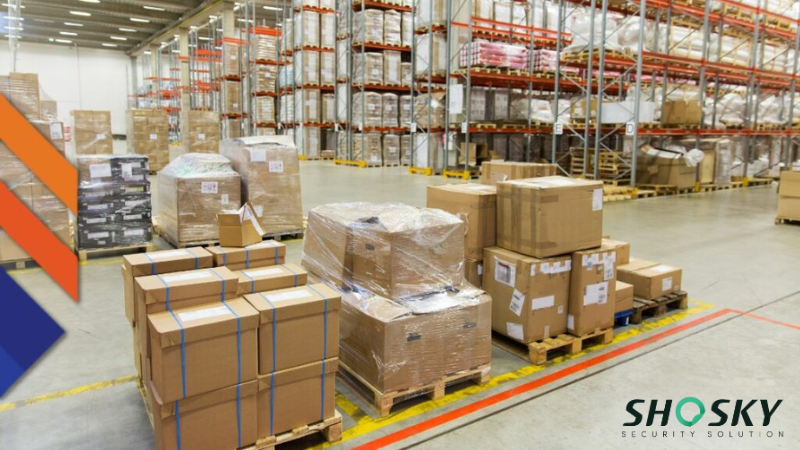
Security tape provides an affordable, effective solution for protecting inventory. Here’s how it’s beneficial for inventory shrinkage:
- Cost-Effective Security Solution: Security tape is an affordable option for warehouse owners. It offers effective protection without the high costs associated with complex security systems. It’s a low-cost, easy-to-implement solution that secures inventory quickly.
- Minimizing Losses: By sealing inventory with tamper-evident tape, security tape reduces theft and unauthorized access. It acts as a deterrent, ensuring that only authorized personnel can access goods, thereby minimizing shrinkage and theft.
- Improved Accountability: Security tape improves tracking and accountability by marking inventory with tamper-evident features, barcodes, or RFID. This enhances record-keeping and ensures transparency throughout.
- Compliance with Security Regulations: Security tape helps businesses meet industry regulations for inventory protection. It ensures compliance with packaging and security standards, especially in sectors like pharmaceuticals or electronics, reducing the risk of penalties or legal issues.

Best Practices for Using Security Tape in the Warehouse
To maximize the effectiveness of security tape in preventing inventory shrinkage, it’s important to use it strategically. Here’s how to make the most of security tape in your warehouse operations:
Strategic Placement of Tape
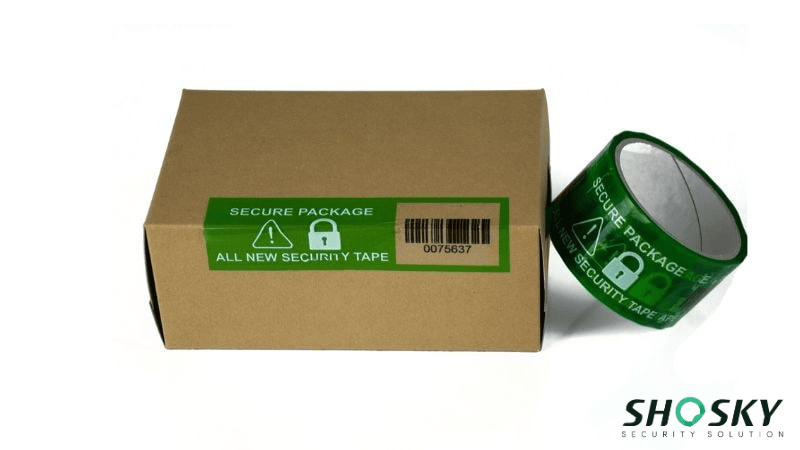
The placement of security tape is crucial to its effectiveness. It needs to be used in key areas where inventory is most vulnerable to tampering. By placing security tape at the right spots, you enhance its ability to protect valuable goods.
- Apply tamper-evident tape at all access points to ensure that any unauthorized access will leave a visible mark.
- Secure boxes, bags, and containers that hold valuable inventory. This ensures tampering is immediately visible.
- For high-value or frequently handled products, seal them with security tape. This prevents unauthorized access and makes it clear if products have been tampered with.
Routine Inspections
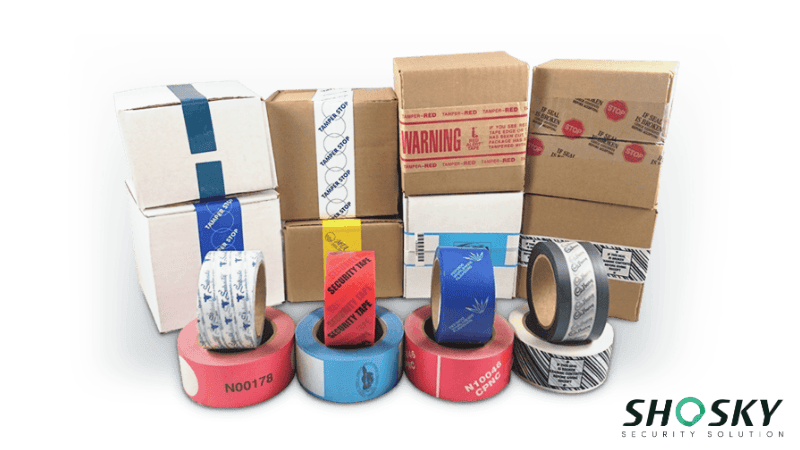
Even the best security tape needs regular checks to ensure it’s still intact and effective. Routinely inspecting the tape will help detect any signs of tampering or deterioration.
- Inspect the security tape regularly, especially on frequently accessed goods.
- Replace any tape that appears damaged or tampered with immediately.
Employee Training

For security tape to be effective, employees must understand its purpose and how to use it properly. Regular training ensures that staff are vigilant and aware of how security tape works in preventing shrinkage.
- Train employees on the importance of security tape and its role in protecting inventory.
- Educate staff on how to recognize tampered tape and what actions to take when they find signs of tampering.
- Ensure that employees understand the procedures for handling inventory that is sealed with security tape.
Integration with Other Security Measures

While security tape is an important tool, it works even better when combined with other warehouse security measures. A comprehensive security system can provide more protection and cover more critical areas.
- Combine security tape with surveillance cameras to monitor areas where inventory is sealed, ensuring suspicious activity is recorded.
- Use access control systems to restrict who can access areas marked with security tape. This limits the risk of unauthorized personnel tampering with goods.
- Install alarm systems to trigger notifications if tamper-evident tape is disturbed. This immediate alert helps prevent further tampering and theft.

Key Considerations When Selecting Security Tape
Choosing the right security tape for your warehouse is an important decision to ensure the protection of your inventory. Several factors come into play, from the tape’s strength to its visibility and customization options. It’s essential to select a tape that meets your warehouse’s specific needs for both functionality and security. Here are key considerations when selecting security tape:
Key Factors to Consider

The primary characteristics of security tape — strength, durability, and visibility — influence its effectiveness. These factors determine how well the tape will hold up under different conditions and how easily tampering can be detected.
- Tape strength: Ensure the tape you choose has the appropriate strength for your warehouse operations. It should be able to endure handling, movement, and environmental conditions without breaking or peeling off.
- Durability: The tape should be capable of withstanding exposure to various conditions like humidity, temperature fluctuations, and general wear and tear during transportation and storage.
- Visibility: A key feature of security tape is its high visibility. Choose brightly colored tapes, such as red or orange, along with clear, visible markings to make tampering easily noticeable.
- Tamper-evident features: Opt for security tape with tamper-evident properties, such as tape that leaves a clear mark or pattern when disturbed, making any tampering immediately visible.
Customization Options for Added Security

Customization is another key element when selecting security tape, allowing you to enhance security and promote brand identity.
- Branding and messaging: Try to custom-print on security tape, like your company logo, slogans, or security instructions, to help in brand identification and enhance warehouse security by making it clear that the goods are under surveillance.
- Security features: Look for a tape you can customize with additional features like unique patterns, serial numbers, or special colors. This ensures that the tape cannot be easily replicated, adding another layer of security to your warehouse operations.
- Personalization for specific use: Customize the messaging on the tape for particular inventory needs, such as “Fragile,” “Do Not Open,” or “Restricted Access,” ensuring that the security tape meets your operational requirements.
Size and Application Considerations
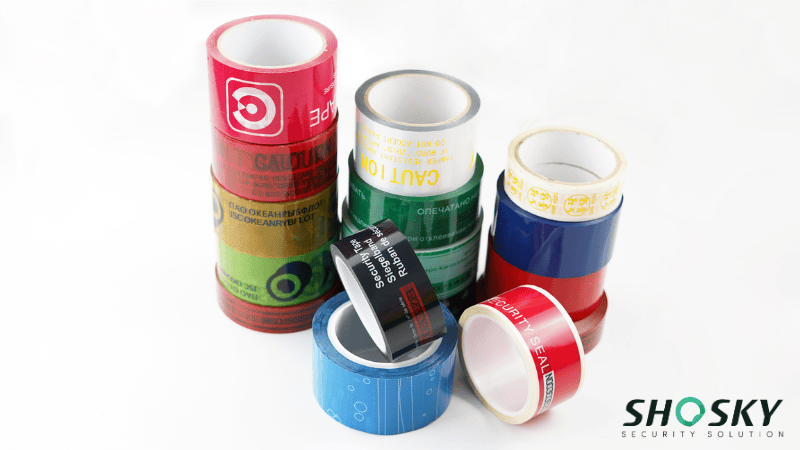
The size and type of security tape you choose will depend on your warehouse’s specific inventory and storage areas. Picking the correct tape ensures it can be used effectively in different locations.
- Size: Make sure the tape size matches your storage and packaging needs. Larger pallets or bulk storage may require wider tape, while smaller boxes or items will need narrower tape.
- Application: Choose the appropriate type of tape for your warehouse’s security needs. For high-security areas or expensive products, use tamper-evident tape. For a general inventory, a more basic tape can provide sufficient security.
FAQs
1. What is tamper-evident tape, and how does it help with shrinkage prevention?
Tamper-evident tape is designed to show clear signs of disturbance when someone tries to open or tamper with the sealed inventory. It helps prevent shrinkage by making any unauthorized handling visible immediately.
2. Can security tape be used on all types of warehouse inventory?
Yes, security tape is versatile and can be applied to most types of inventories, including boxes, pallets, bags, and sensitive products, providing a clear layer of protection against tampering and theft.
3. How can I incorporate security tape with other warehouse security systems?
Security tape can be combined with surveillance cameras, access control systems, and alarms to create a more robust security solution. This integration provides comprehensive coverage, deterring theft and ensuring better tracking of inventory.
Conclusion
Security tape plays a crucial role in reducing inventory shrinkage by providing a visible deterrent and tamper-evident features. It is a cost-effective solution that enhances warehouse security without requiring large investments, making it accessible for both small businesses and large warehouses.
Warehouse owners and managers should consider incorporating security tape into their operations to safeguard their inventory and reduce losses.
Secure Your Warehouse with Shosky Security’s Security Tape
Protecting your warehouse inventory has never been easier or more affordable. With Shosky Security’s security tape, you can strengthen your security measures and reduce shrinkage with advanced solutions tailored to your needs. Don’t wait for shrinkage to impact your business. Contact us today, and experience peace of mind knowing that your assets are secured by the best in the industry.
